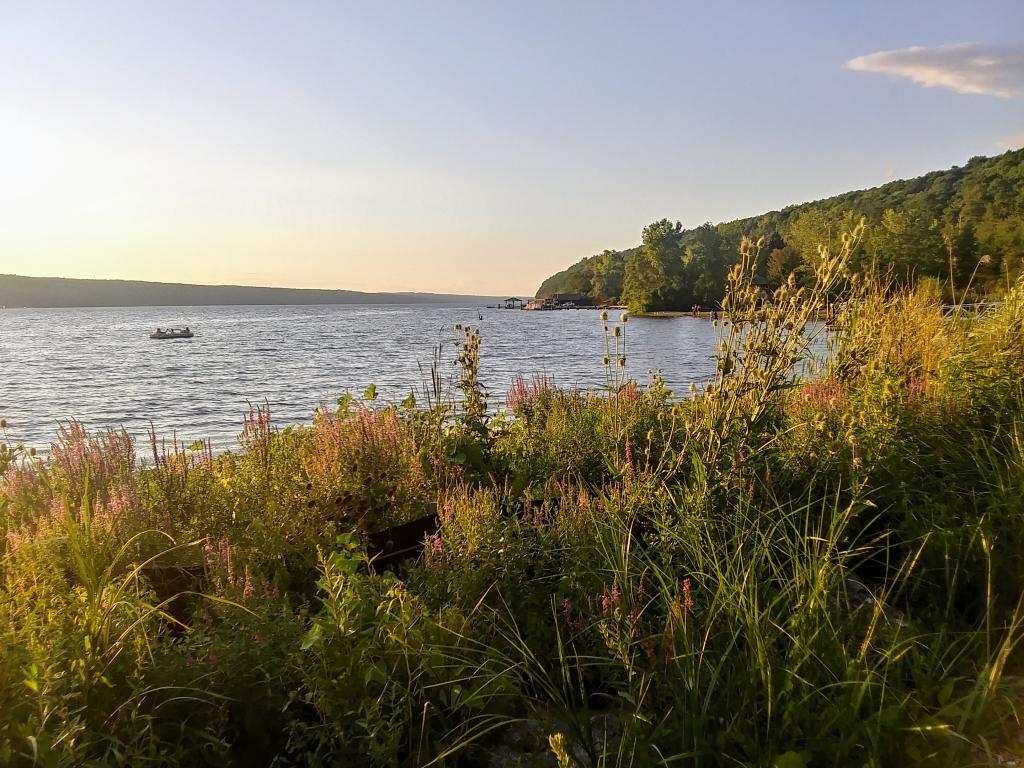The absolutely gross Montour Falls Canal. 🛶
The other day I paddled the Montour Falls Canal, hoping to see some of Bad Indian Swamp but mostly taking in the bad odors of sewage and gasoline motors as I paddled through the pea green water in the trench dredged more for navigation of power boats than natural beauty.
I am sure a lot of the problem is the nature of the canal – water flows slowly through the marsh into Seneca Lake. It collects waste water from treatment plants Montour Falls and Watkins Glen, along with urban runoff from streets and lawns. It’s downgradient from farms, which run off its share of manure, synthetic fertilizer and pesticides. While no source of pollution is that significant – farmers follow their nutrient management plans, villages treat their waste water to a great extent, it just kind of adds up and collects.
More though needs to be done. The overwhelming smell of sewage suggests that either treatment plants are overflowing, they’re dumping too much treated waste or there are homes, businesses or marinas dumping directly into the lake. While probably a lot of the pollution is dilluted and biodegrades quickly when reaching the lake within hours it’s still pretty gross to say the least and not good for human health or the viability of the canal and the lake as a whole. An occasional emission may not make much of a difference but it adds up.
